Tri-tip Has 2 Grain Directions, One is More Vertical and One is More Horizontal
Here’s the triangular end – the grain is more vertical.
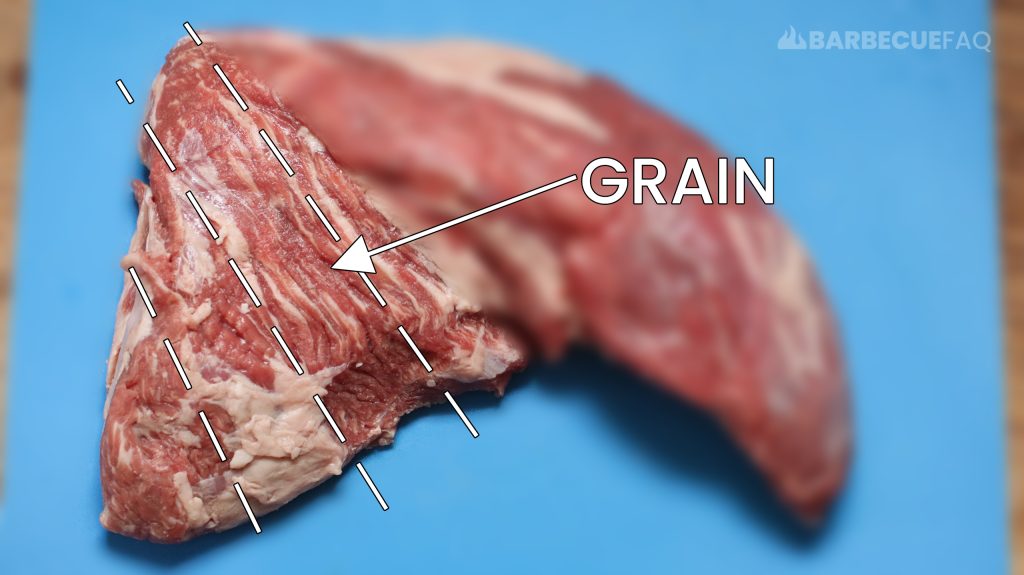
Looking at the “tube” end we can see the grain is more horizontal:
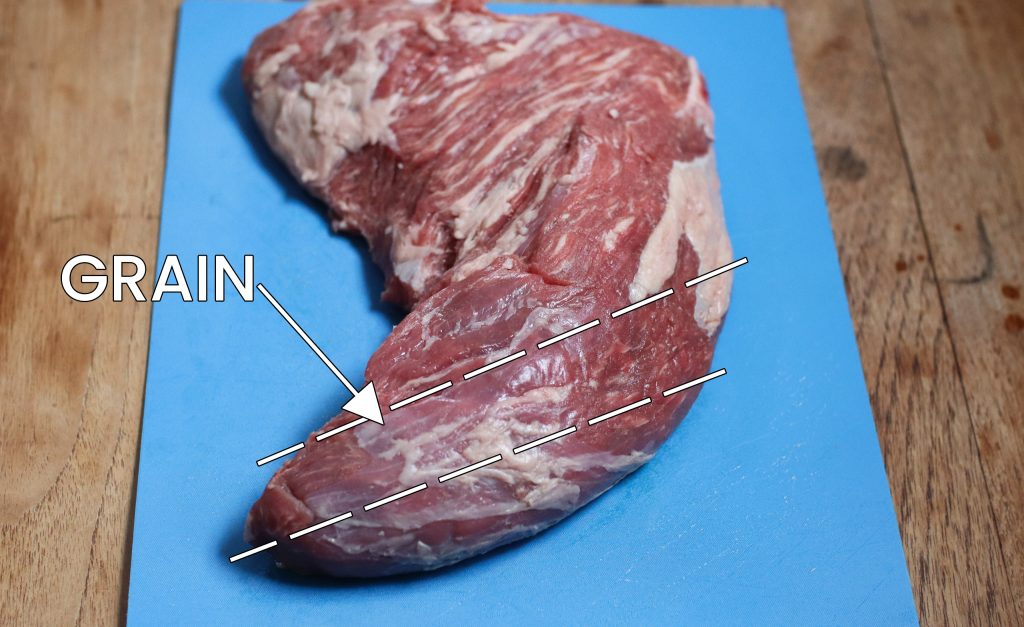
After Cooking, Cut the Tri-tip in Half Where the Grain Changes
We now know that the grain changes roughly at the middle of the boomerang shape.
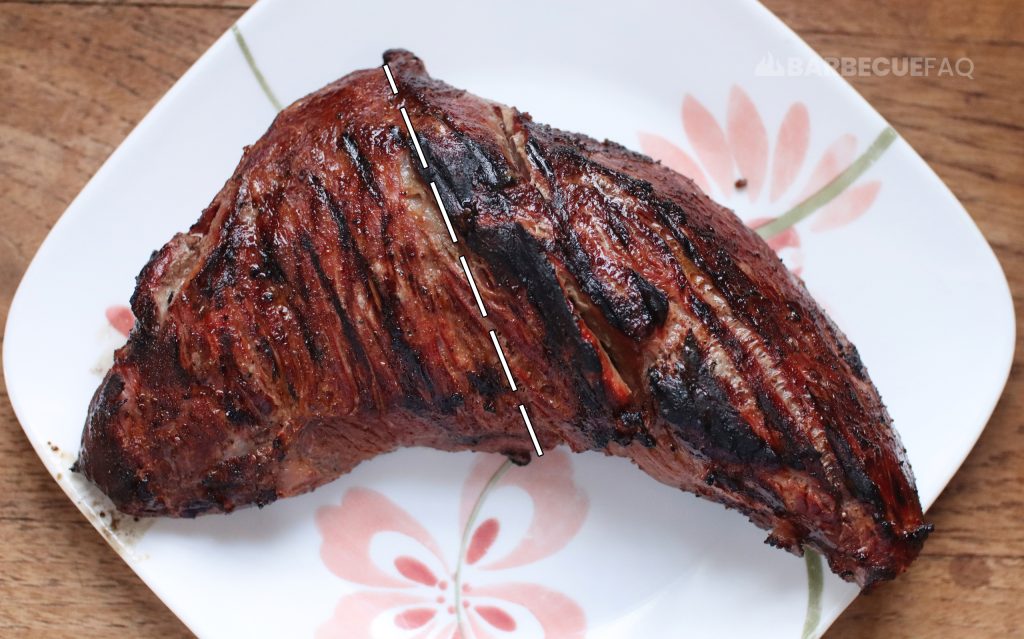
The Grain of the Triangle End was Vertical, So We’d Slice Horizontally
That looks like this:
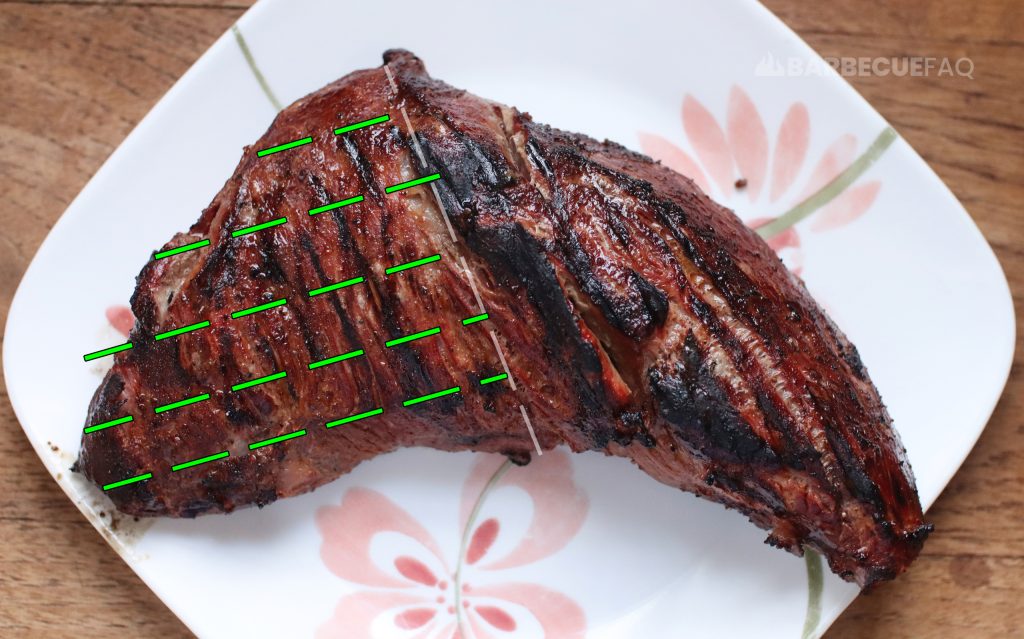
The “Tube” Side Grain was More Horizontal, So We’d Slice More Vertically
Meaning, you’d cut the cooked meat like this:
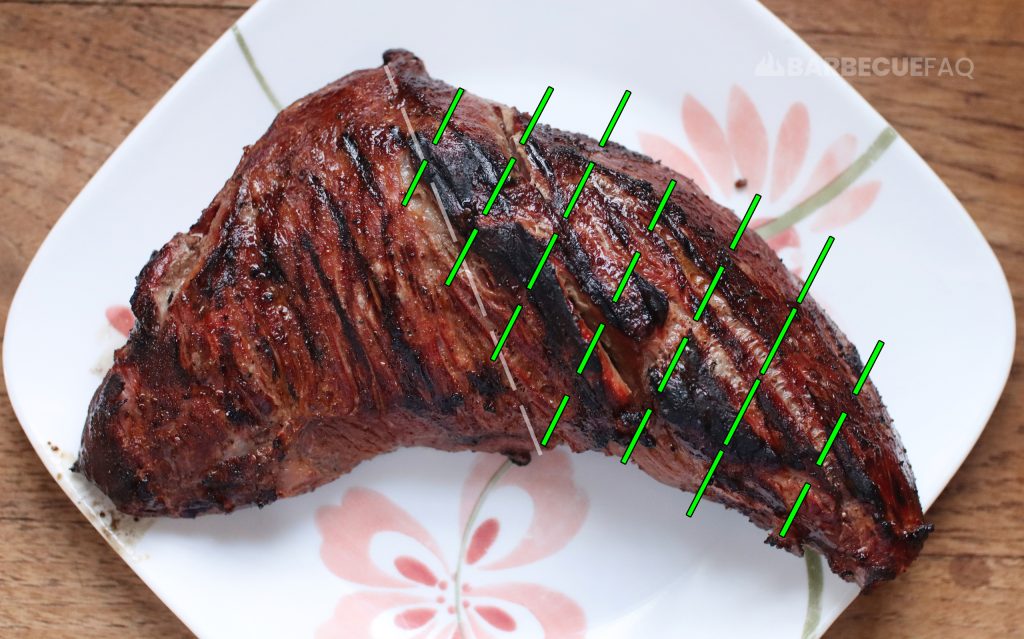


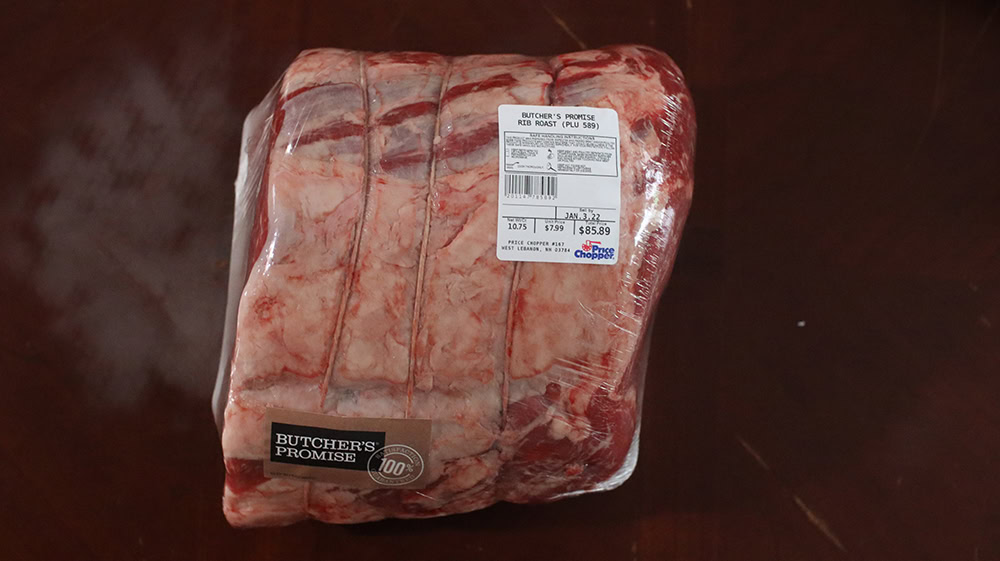
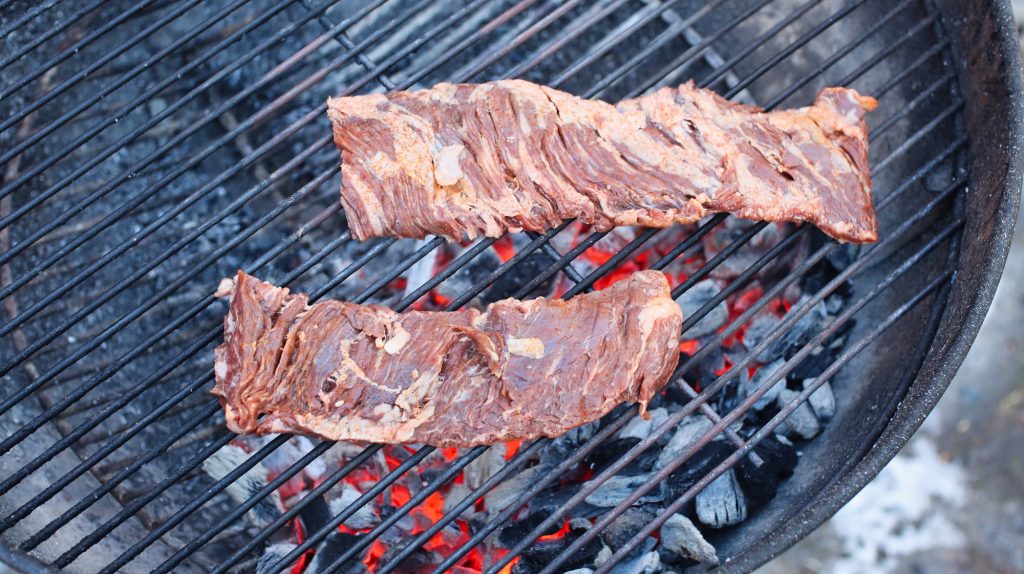
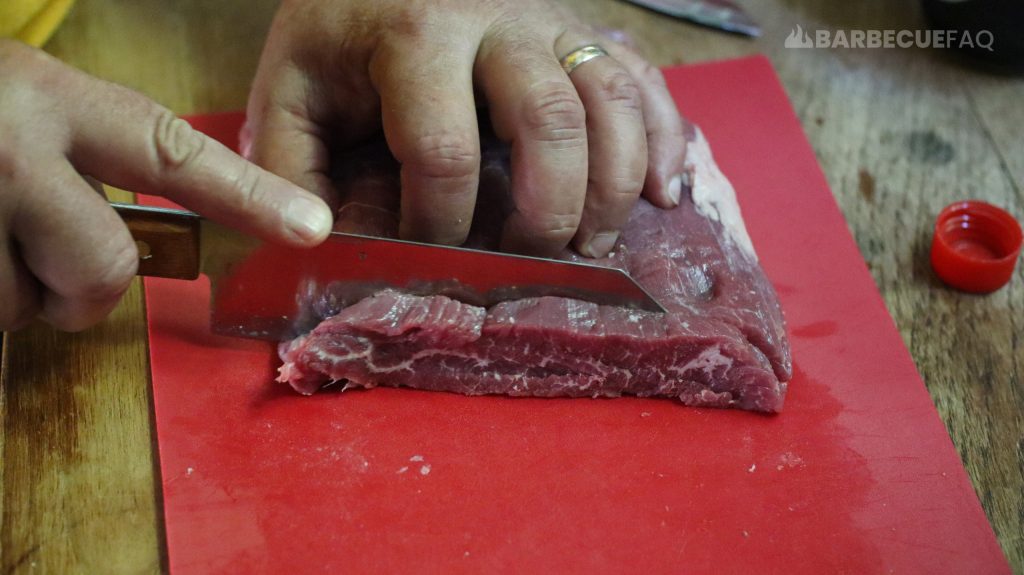
2 comments
Molly
Thanks, Dylan, for the tutorial. I have always been confused by cutting against the grain and know I’ve probably been doing it wrong!!
Dylan Clay
Happy to help Molly!